This past week - inside
We are no longer building saddle trees, but we have two videos about how Western saddles fit horses available on our westernsaddlefit.com website.
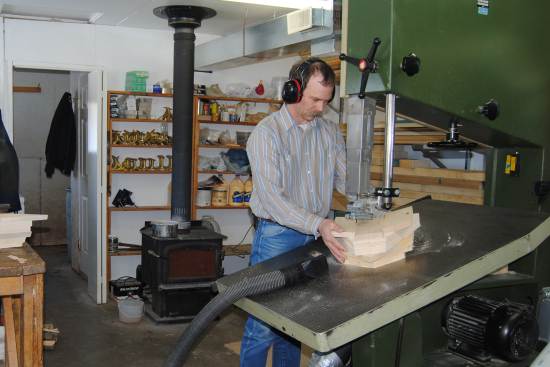
So if you are tired of pictures of snow (I am, especially the one outside my window), here's some pictures from the inside of the shop this week. Here's the standard normal set up when Rod starts cutting out his next set of four trees. He starts with the table tilted to the highest degree needed and cuts out everything he needs to there, then lowers it to the next angle, cuts things out, and so on, and so on, and so on... Here he is cutting out the angle on the bottom of the fork that both sets the angle of the bars on the horse and the angle of the fork on the bars. These three dimensional things are interesting...
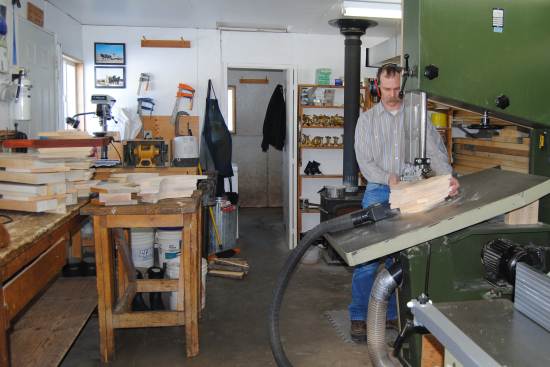
On the bench beside him are the four sets of bars (on the left) and the four cantles behind them with the wood for the four horn caps on top. The dark red wood is the padauk for the exposed wood horn cap. And on the table are the other three forks already partially cut out.
Then I was done my work and went into the house and didn't take any more pictures because I have seen this a few hundred times and after a while it gets boring to watch...
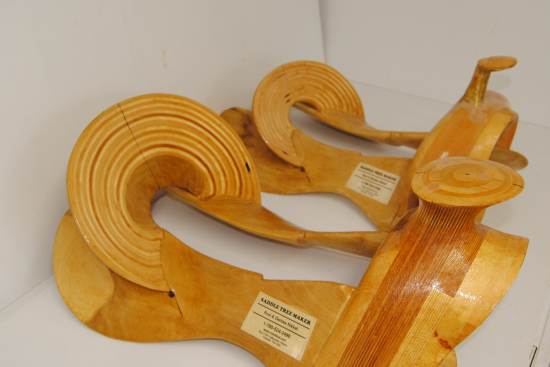 But here's something I found interesting, so we took pictures of it. We made one of the largest cantles we have ever made this past week. It is 5 1/2" tall by 13" wide at 40 degrees.
But here's something I found interesting, so we took pictures of it. We made one of the largest cantles we have ever made this past week. It is 5 1/2" tall by 13" wide at 40 degrees.
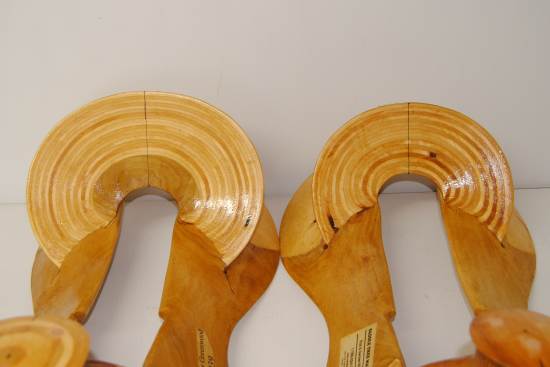
To compare, here it is next to a 4" tall by 11" wide, 40 degree cantle.
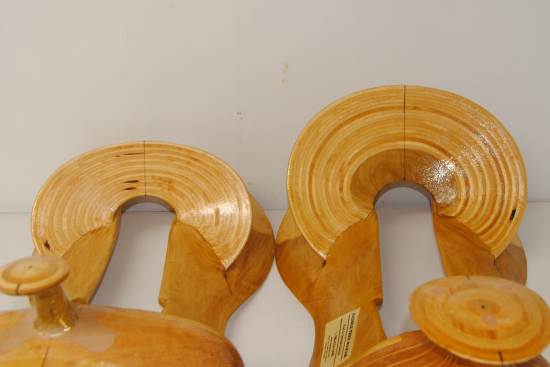 And next to a 3 1/2" tall by 12" wide, 35 degree cantle.
And next to a 3 1/2" tall by 12" wide, 35 degree cantle.
Now, we have made a dozen (12 on the nose - I counted them!) cantles taller than 5" before, but all of them have been more stood up than 40 degrees (which is normally our most stood up angle) at 42.5 and even 45 degrees. And standing up a cantle actually makes its face smaller. Here's why:
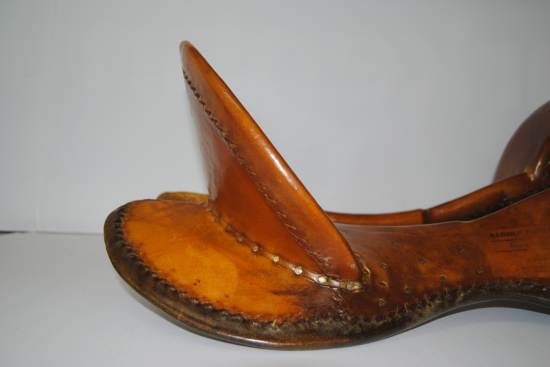 Here's a 5 1/2" tall cantle at a 42.5 degree angle. Remember that the angles aren't anything you can measure on the tree or even a finished cantle before it is attached to the tree. They come off the jigs we use to cut them out and they are just a handy label to use to describe the angles relative to each other.
Here's a 5 1/2" tall cantle at a 42.5 degree angle. Remember that the angles aren't anything you can measure on the tree or even a finished cantle before it is attached to the tree. They come off the jigs we use to cut them out and they are just a handy label to use to describe the angles relative to each other.
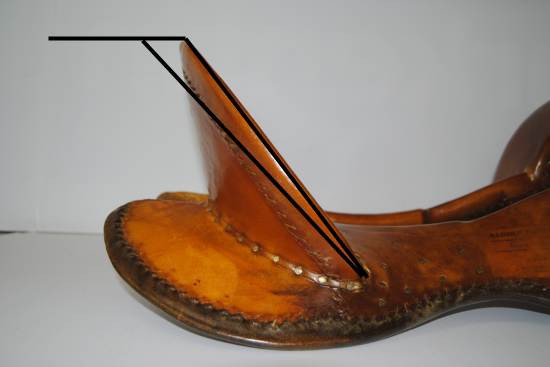
If we lean the cantle back to 40 degrees, then to get to the same height, the distance between the bottom of the cantle and the top of the face of the cantle increases. This results in more overall surface area on the face of the cantle.
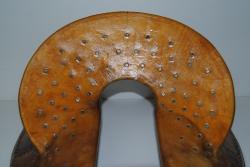 |
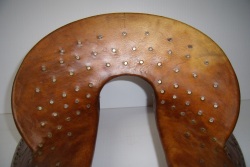 |
For comparison, here is a 4 1/2" high by 12 1/2" wide by 35 degree (more laid back) cantle on the left compared to a 4 1/2" high by 12 1/2" wide 40 degree (more stood up) cantle on the right. They are the same width, but the more laid back cantle has more depth top to bottom.
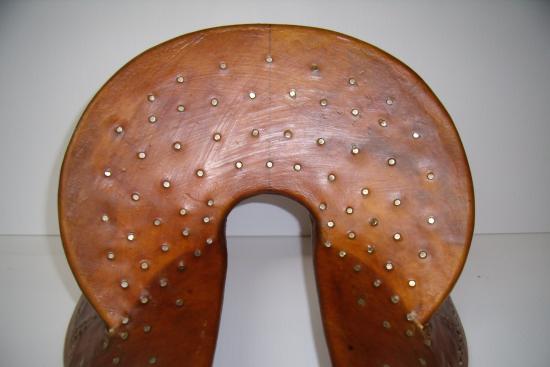 The only picture I can find that was bigger was this one at 6 1/4" tall by 13" wide at 42.5 degrees.
The only picture I can find that was bigger was this one at 6 1/4" tall by 13" wide at 42.5 degrees.
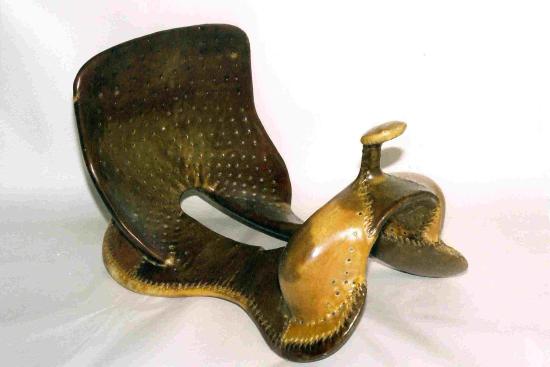
Well, except for this one, but that one was a very special request...
